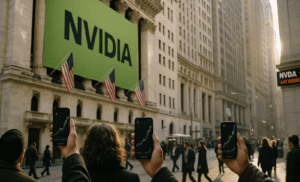In an era where misinformation spreads faster than truth, Muslims and Jews in the West have become convenient scapegoats—portrayed as cultural outsiders, security threats, or political pawns. Whether it’s a veiled Muslim woman navigating a hostile subway platform or a Jewish student targeted on a university campus, the patterns of hate are disturbingly familiar.
Islamophobia and antisemitism are not separate phenomena—they are twin reflections of the same deep-rooted intolerance, often fueled by the same political rhetoric and social media echo chambers.
Muslims and Jews as “The Other”
In both the United States and Europe, Muslims are frequently cast as threats to national security, while Jews are often blamed for controlling economic or political systems. These stereotypes have long historical roots, but in today’s hyperconnected world, they are reinforced with alarming speed through digital platforms. Just as Muslims are accused of harboring secret agendas, Jews are portrayed as global manipulators—both seen as “unassimilable” and fundamentally foreign.
This dual narrative reflects a broader societal anxiety: the fear of the outsider, the belief that pluralism threatens cohesion. In the U.S., far-right groups and influencers regularly recycle these tropes, targeting both communities with similar language—labeling them “invaders,” “elites,” or “enemies within.”
The Role of Social Media in Shaping Bigotry
Social media algorithms reward outrage. On Twitter/X and TikTok, posts attacking Muslims and Jews often go viral, especially after global events that stir public emotion—such as wars in the Middle East or domestic terrorist incidents. Hashtags like #StopIslam or antisemitic memes about global banking conspiracies may appear different on the surface, but they stem from the same logic: dehumanization.
Content creators on fringe platforms like Rumble or Truth Social frequently package Islamophobia and antisemitism together, positioning themselves as defenders of “Western civilization” against alleged religious or ethnic threats. The result is a constant digital feedback loop where suspicion, fear, and hate are not only shared—but monetized.
Political Rhetoric and Institutional Bias
In U.S. politics, Muslim and Jewish communities have faced increasing marginalization—though in different forms. Muslims are often subjected to surveillance and securitization, while Jews face rising hate crimes and scapegoating for geopolitical conflicts. Yet the reaction is often asymmetrical: while antisemitic attacks draw strong political condemnation, Islamophobia is still treated as politically permissible in many circles.
Some politicians simultaneously exploit both forms of hatred—courting support by invoking fears of “Sharia law” or “globalist agendas.” In doing so, they erase the human realities of these communities and stoke division under the guise of national identity.
Shared Consequences, Shared Responsibility
The real-world impact is devastating. In 2024, the U.S. saw a spike in hate crimes targeting both Muslims and Jews—vandalised synagogues, mosques set ablaze, and worshippers assaulted. In Europe, antisemitic graffiti and anti-Muslim demonstrations often appear in the same cities, sometimes within days of each other.
These attacks are not isolated incidents; they are symptoms of the same disease. Both communities experience alienation, fear, and trauma. Both are made to justify their existence in public discourse, defend their communities against violent stereotypes, and prove their belonging over and over again.
The Danger of Dividing the Victims
Attempts to treat Islamophobia and antisemitism as separate or unrelated ignore how systems of bigotry function. The same ideologies that produce white nationalism, authoritarian populism, and cultural chauvinism rely on scapegoating religious minorities. Pitting Muslims and Jews against each other only benefits those who thrive on fear and division.
True solidarity means recognizing the overlap in these struggles—and resisting efforts to weaponize one identity against the other. Muslim and Jewish communities, along with allies, must work together to expose hate, dismantle the platforms that amplify it, and demand accountability from institutions that ignore it.
The Same Dangerous Path
Islamophobia and antisemitism are not isolated aberrations—they are systemic, intertwined, and rising in tandem. Both rely on centuries-old tropes that have been digitized and repackaged for a modern audience. Recognizing that these hatreds stem from the same source is essential for building a more inclusive, democratic, and resilient society. Until then, both Muslims and Jews will continue to walk the same dangerous path—separately targeted, but equally vulnerable.















